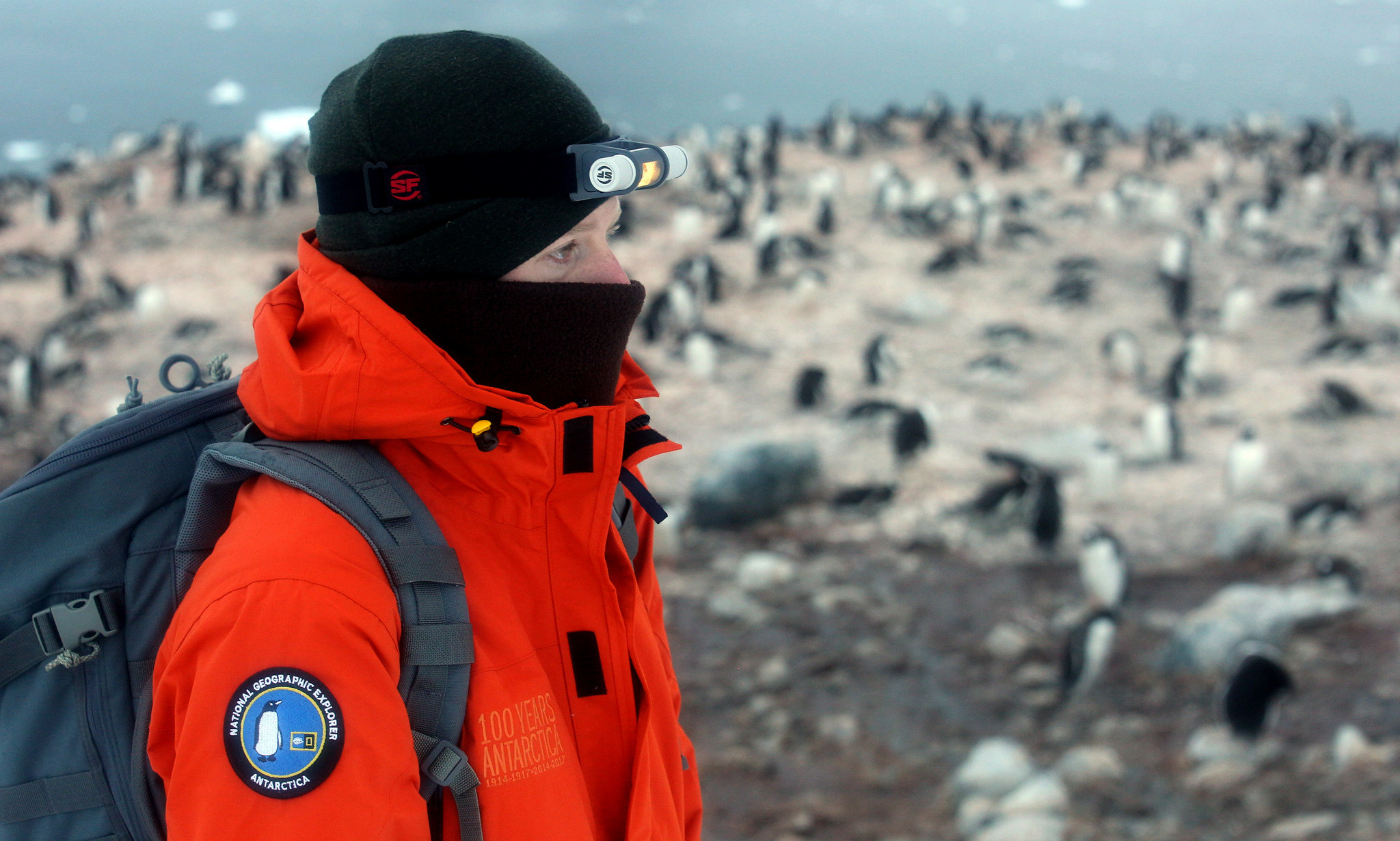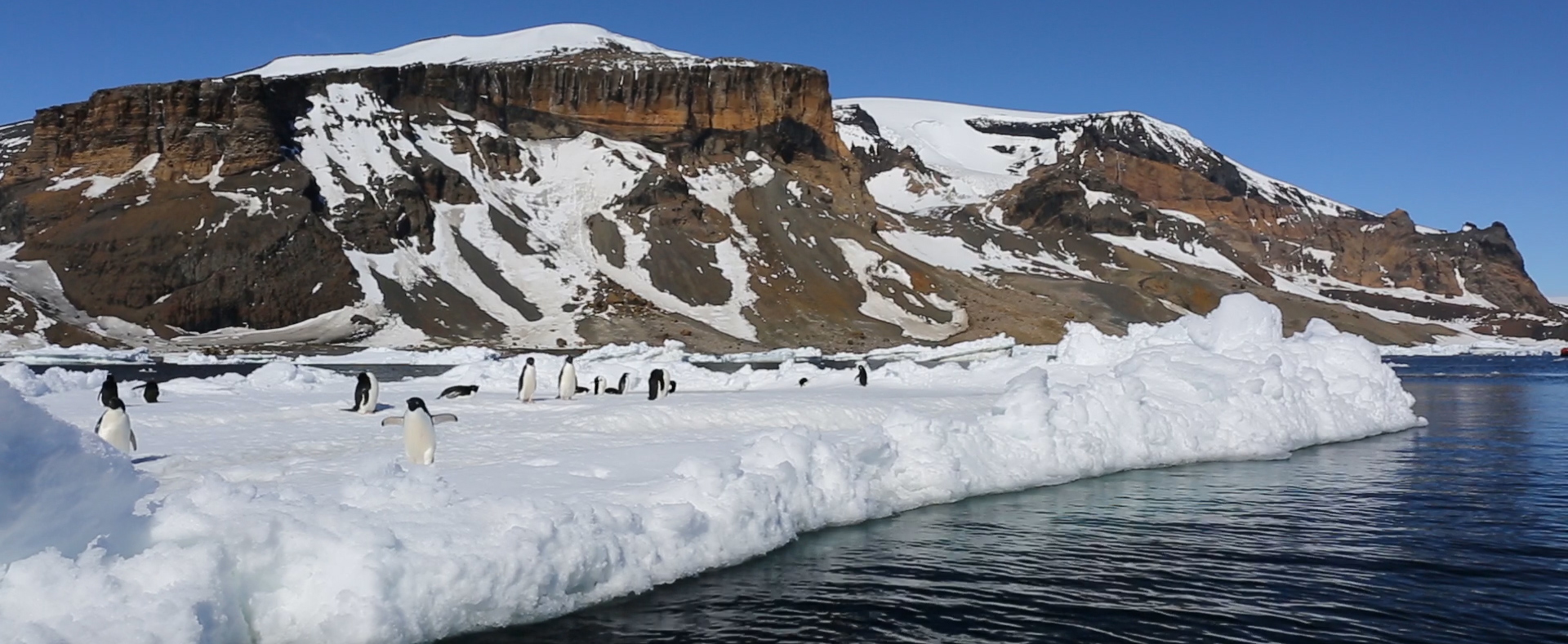Pristine and powerful, the White Continent is alive — and enlivening.
Go ahead. Tell people you're traveling to Antarctica and wait for the responses:
"Wait, what? Did you say Antarctica?"
"Be sure to get a selfie with a polar bear, OK?"
"You're gonna freeze your [you-know-what] off!"
And, perhaps most frequently, "Why?"
I did say Antarctica. It was penguins, not polar bears, we would see aplenty. We didn't freeze our you-know-whats off; it was chilly, but I've felt colder skiing in Mammoth.
That left only the question of why, and before this long-overdue vacation, I didn't really have an answer.
Why take three planes that deposit you in a former penal colony? Why board a ship that will then cross some of the world's most treacherous waters? Why travel to a place about which one early explorer wrote, "Polar exploration is … [the] most isolated way of having a bad time which has been devised"?
Apsley Cherry-Garrard, the author of that line and part of Robert Scott's 1910 expedition to the South Pole, had it rough. He survived; Scott did not and died knowing he had failed to beat Roald Amundsen to become the first to reach that elusively hostile point: 90 degrees south latitude.
For my two adult sons, Carl and Christian, and me, our two-week adventure was infinitely easier than Cherry-Garrad's. It was only after we'd been to this place — at once harsh yet fragile, bleak yet majestic, complex yet simple — that we knew why.
The long journey there
It's not easy getting to Ushuaia, the Argentine town at the southernmost tip of South America. From LAX, it means about 18 hours in the air (unless you stop in Buenos Aires, which we did and I recommend) before you reach this embarkation point for about 90% of all trips to Antarctica.
Along with our gear — three carry-on bags, three parkas (provided by the tour company), three sets of Wellington boots rented in Ushuaia, assorted video and still cameras and numerous 32GB memory cards plus a laptop — we boarded the Explorer, a National Geographic vessel that can carry 148 passengers in its 81 cabins. (We had a triple cabin. They are scarce and sell out quickly.)
The Explorer, an ice-rated ship whose steel hull can cut through the frozen stuff, is small enough to get into bays and inlets so we could easily go ashore but large enough to withstand the tempestuous Drake Passage.
Sometimes it's referred to as the "Drake Tax" — the price you pay to travel the 700 or so miles from Ushuaia to the Antarctic Peninsula. We would cross this confluence of the Pacific and Atlantic oceans twice, a 36-hour transit that can often test the mettle of even the most seasoned sailor. The weather gods smiled on us, and our passages going and coming were relatively calm, so we never needed the freely dispensed seasickness medication.
Now, with the Antarctic Peninsula coming into view, it was showtime.
Video
The White Continent
Eddy Hartenstein recalls his expedition to Antarctica aboard the National Geographic Explorer.

Identifying the locals
The Explorer is equipped with about a dozen 10-person Zodiacs and three dozen two-person kayaks, key to getting us close enough to let the White Continent work its magic.
Over the next seven days, our expedition took us to Half Moon Island in the South Shetland Islands, then Brown Bluff, Cierva Cove, Enterprise and Danco islands, through the Lemaire Channel and Gerlache Strait, to Booth and Detaille islands, and finally Port Lockroy, the British outpost with three year-round staffers.
Each morning — at least, the clock said it was morning, though during our December trip, the sun never really set — we would rise by 7, eat breakfast, then head for the Zodiacs or kayaks for the first of two outings.
Deposited on land, Lisa Kelley, the expedition leader, and her staff of 14 naturalists introduced us to the ubiquitous penguins and taught us how to differentiate among the species. For Adélie penguins, we were to look for white feathers around the eyes. The chinstrap was easy to spot because it looked like its name. Gentoo have a black throat, a big tail and a white mark above each eye.
Whatever the species of penguin, the 75 million that live here share some common traits: They seem fearless, they toddle like wobbly waiters and, like all living creatures, they excrete. After our visits to the rookeries, our boots were covered with their strong-smelling souvenirs. (Boots were washed thoroughly and disinfected when we disembarked and reembarked.)
Seals too are an important part of this animal ecosystem. We saw the fearsome leopard seal, including one sitting alone on its own ice floe; Weddell seals, which can stay under water for more than an hour; and the slender crabeater seals, which generally feed on krill, not crab.
Countless species of seabirds, which often came arm's-length close, wheeled and turned overhead, their cries punctuating the chilly (temperatures were generally in the high 20s) summer air. We watched predatory skuas as they tried to pluck an unsuspecting penguin chick from its nest. In our Zodiacs, we zoomed alongside porpoising penguins scooping their fill of krill.
And then there were the whales: the distinctive (and, at one time, nearly extinct) humpback, weighing in at as much as 79,000 pounds; the minke, which can reach speeds of 24 mph; the even speedier sei (pronounced "say"), which motor up to 30 mph; the sleek fin, which can be as long as 70 feet; and the feared orca, also known as the killer whale.
They breached and sang and showed their flukes and left us amused at their antics and amazed at their majesty.
We were awakened about 3 one morning by Kelley's voice on the public address system alerting us to pods of orcas swimming alongside the ship. From the deck, we could see them turning over on their backs, playing and flirting with us.
Our jaws dropped when we saw the natural wonders of this vast land: fields of icebergs, along with calving glaciers that cracked like a rifle shot as they sent ice crashing into the water. We traversed valleys, ridges and bluffs, including a four-mile hike through soft snow on which an almost 1,000-foot elevation gain left us winded.
It is odd to think of the 5.5 million square miles of this continent as a desert, but it is. It receives little precipitation, but when it does snow, it stays put. As a result, more than 99% of the land is covered with ice that's as much as three miles deep in some places.
Our waterproof pants and parkas as well as gloves, balaclavas and long underwear kept the elements at bay; our naturalists kept us safe. Like the explorers of the early 20th century, we were dazzled by the fierce beauty, but we were never in danger of anything more than aesthetic overload.
Back aboard the ship
Like any good cruise, this one made the most of mealtimes; the food and service were excellent, and the casual ambience made it easier to relax after a day filled with the exhilarating tension of many firsts and even more superlatives.
Each day, the eminently personable and knowledgeable staff recapped what we had seen using videos and stills, often shot that day, and charts. As we listened to their presentations, so fascinating that we always longed for more, the big picture of Antarctica began to emerge. It's a microcosm of the delicate balance of the Earth's climates and ecosystems, a giant science project that offers important lessons about the issues affecting our globe.
These debriefings also gave us a chance to appreciate anew the passion the staff and crew brought to their roles as nature evangelists. Afterward, we felt duly deputized as ambassadors of Antarctica.
Our fellow passengers also had a chance to share their "aha!" moments with one another: the distinctive call of the Adélie penguin that betrays its identity; the cherubic face of a Weddell seal; the slightly fishy-smelling "blow" from a whale; the 3 a.m. surprise play date with orcas.
Each day was a tsunami of photo opportunities. As a father, though, I was gratified to see my sons occasionally put down their camera gear and simply immerse themselves in an experience unlike any other.
We came home with plenty of photos, of course (but no selfies with polar bears — they live at the other pole). But the memory of our experiences in this nearly blank slate — largely unspoiled, wholly seductive — is the portrait we'll treasure for a lifetime.
Hartenstein is the chairman of Tribune Publishing, The Times' parent company.
How to gear up for an Antarctic adventure
A special trip requires special gear. Here are some suggestions from National Geographic and others who have made the trip:
A parka. Some expeditions provide them, and some will deliver to the ship so you don't have to carry them from Los Angeles. The hood on the parka can cut down your peripheral vision; a wool cap can keep you warm and seeing everything.
Wellington boots. These can be rented in Ushuaia, Argentina, or through cruise lines — again, easier than packing and toting.

Thermal boot socks.
Waterproof pants.
Waterproof gloves and possibly glove liners. If you plan to take pictures, you may want a pair of gloves that permits your fingers relatively free movement.
Long underwear.
Layers of clothing, including fleece.
Balaclava (covers your neck and most of your face) or a duck-bill hat with a neck gaiter.
Neoprene booties or other shoes that provide traction for those times when you'll walk on a wet or slippery surface but don't need to wear your Wellington boots.
Plenty of memory cards for still and video cameras. If you're willing to carry one, a laptop to download your pictures at the end of each day.
One or more dry bags. Parkas may not be 100% waterproof, so hiding your camera gear inside your jacket won't always ensure its safety. Dry bags should suffice. A less glamorous solution: a sturdy plastic trash bag tucked inside another bag.
Sunglasses and sunblock.
A bag of uncooked rice. Anyone who has electronics may want to carry a bag of rice in case those electronics get wet. Sometimes the kitchen can help with this.
Sleeping and/or other medications. Because of the hours of sunlight, your circadian rhythms may be disrupted. Check with your doctor to see what other medications might be appropriate, including seasickness medication and a broad-spectrum antibiotic.
NatGeo offers a package of gear/clothing. To see recommendations and check prices, visit the website.
Video captions:
Contact:
L.A. Times Travel, email and Twitter
Additional credits:
Web producers: Sean Greene, Evan Wagstaff, Armand Emamdjomeh | Photo editor: Richard Derk
Getting there
The best way to Ushuaia, Argentina
Ushuaia is the embarcation point for most cruises to Antarctica.
From LAX, connecting service (change of planes) to Ushuaia is offered on Delta, Copa, American, United and Lan, with a layover in Buenos Aires, where there often is a change of airports and a change of carriers. Restricted round-trip fares begin at $1,055, including all taxes and fees, increasing at the highest point of the season.
Cruises to Antarctica
The "season" for trips to Antarctica is usually late October or early November through the first part of March.
There are numerous options for seeing the White Continent by sea, and talking with your travel agent is a good place to begin. Make sure your travel provider is a member of the International Assn. of Antarctic Tour Operators, which promotes responsible travel to Antarctica.
Large cruise ships sometimes include Antarctica on their itineraries, but passengers will get mostly a "drive-by" view.
Smaller ships, including luxury vessels, can navigate straits and channels and take passengers ashore in Zodiacs and kayaks. On land, passengers can hike, visit penguin colonies and learn more about other wildlife.
This trip was through National Geographic, which operates two ships on Antarctic expeditions. The 148-passenger Explorer offers 14- and 24-day trips to Antarctica; the longer trip includes South Georgia and the Falkland islands. The 106-passenger Orion offers 24-day trips. It embarks from Santiago, Chile. Prices begin at $12,970 per person, based on double occupancy. More info.
To learn more about cruise possibilities: (888) 484-2244 and (541) 330-2454, PolarCruises.com. Polar Cruises also books cruises to the Arctic. Owner Chuck Cross and his wife, Lynn, are veterans of more than 100 trips to Antarctica and the Arctic.
Alumni organizations, tour companies and other travel providers also offer trips to Antarctica and are worth checking.

















